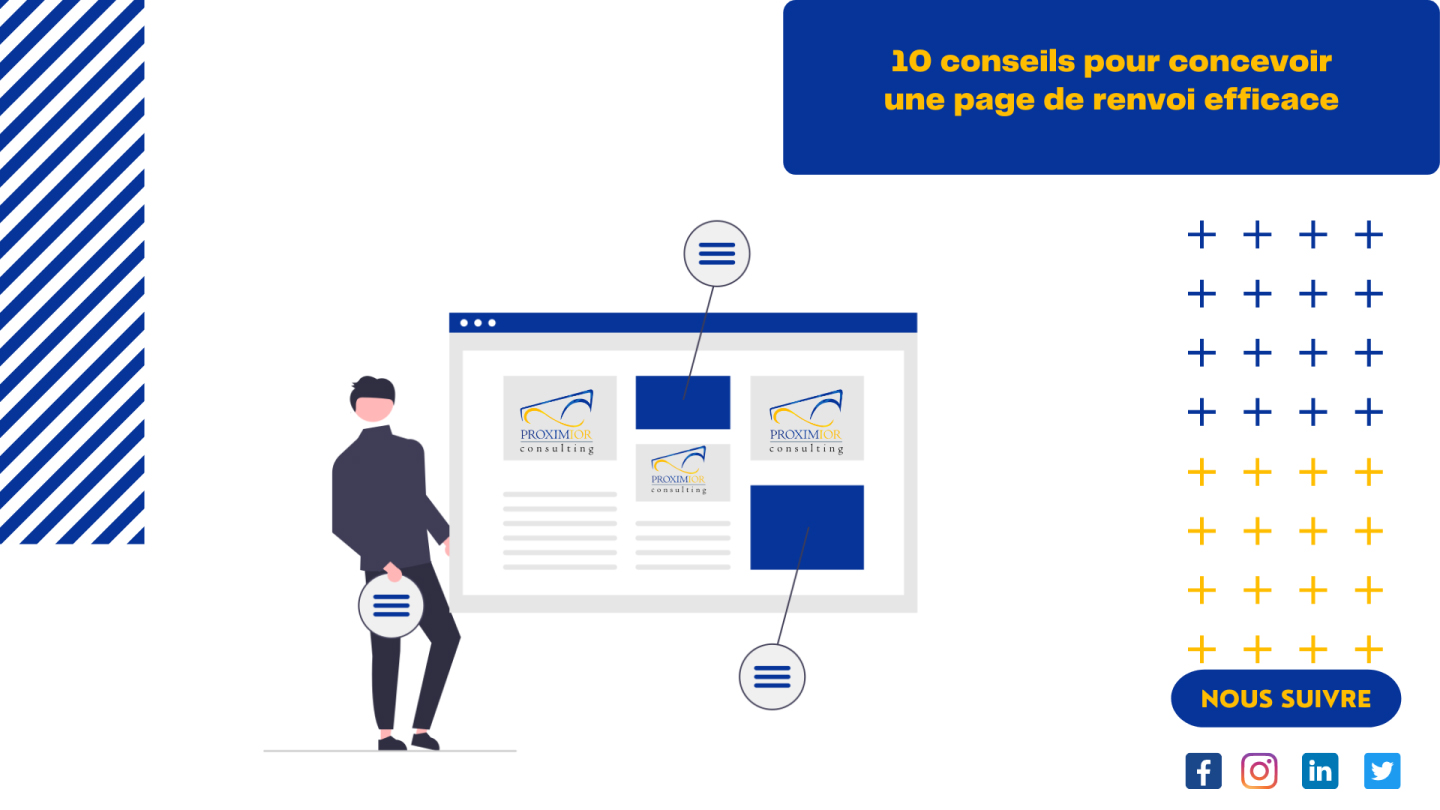22 Apr 10 Tips for Designing an Effective Landing Page

Landing pages, the first page a new site visitor will see, help businesses create effective marketing strategies by instantly promoting products and services. This is an essential part of the website creation process, as it is an opportunity to attract visitors and push them on the path to conversion.
1. Recommended landing page content design
Your landing page content should be short but also informative. It only takes 8 seconds for a new user to make a decision on your website about your service. Since you only have 8 seconds, you need to be smart in the way you present your content. Information overload will overwhelm your visitors. They won’t know where to look for their answers and will opt for one of your competitors because they won’t be bombarded with blocks of text and pop-ups.
– Use informative, simple and clear language to offer your service to the visitor in seconds. This is easily managed if you break down the design of an effective landing page. The first thing a user will see is the “Title”. Use the “Title” to highlight the main benefit of your service so visitors know exactly what they can get from you.
– The second element to include on your landing page is the “subtitle”. While the “Title” will highlight your USP (unique selling point), your “Subtitle” will better explain the offer and may even present a different angle of your USP. It is important that the “Subtitle” is complementary to the “Title”, but also understandable if read alone.
– Below, or at least somewhere on your landing page, it is essential to have a CTA (Call to Action). These are clickable buttons that encourage visitors to perform an action, such as registering or getting in touch, and should be incorporated into the website. It is recommended to include CTAs at both the bottom and top of pages so that users do not have to search for them. You can also make the CTA a constant floating element on each page. Adding animation or a variety of designs to CTA buttons can also pique the interest of site visitors.
– The “Title”, “Subtitle” and “CTA” should be the main content a visitor sees when they land on the page. As he scrolls down the page, he should discover the “benefits” of your service. This is your opportunity to get into the details of your universal selling point. Use bullet points to sell your service, but keep the list short so as not to bore users. Start with the most important benefit and move on to the other services offered.
If all of the above elements have done their job and users have continued to scroll down your landing page, this is the perfect opportunity to add a form or contact element. Remember to keep your ‘titles’, ‘subtitles’, ‘CTAs’ and ‘benefits’ in the same tone and direction so as not to confuse and discourage visitors.
2. Minimalism is king
The best landing pages are both minimalist and aesthetically pleasing. Use simple, clean images surrounded by crisp, white visual space to draw attention to the parts of the site that matter most – the content that sells your service.
Opt for a large, bold font to make it easier for visitors to read and understand your content on any device. Also use block backgrounds on your landing page to separate the different stages of the content and make the visitor feel like they are taking a journey.
3. Image selection is key
Visual content is essential in all aspects of online marketing and creation. Photos can enhance visitors’ interaction with your product as much, if not more, than your text. However, it is very important to select images carefully, as the message they send is entirely what the visitor receives from them. Of course, you can manufacture the response by selecting very specific images. A professional graphic designer or photographer will know exactly how to display your product to offer the best chance of gaining potential customers.
4. Build trust
New visitors are most likely to arrive at your landing page through a search engine. Once they arrive on your site, it is your job to build trust and present a service that others trust. This is where you should use customer reviews and partner testimonials to show social proof of work and collaboration.
Testimonials, branding and trust badges are what we call “trust signals” that reassure visitors. They build trust and give your brand many seals of approval. This builds trust in your brand and encourages users to move up the conversion funnel.
5. A/B Testing
Once you have created a landing page, you should conduct A/B testing to generate analytics on how users use your landing page. During the testing phase, you should observe how many times visitors pressed the CTA buttons, what content was viewed and what they interacted with. Also, how many users have filled out your contact form.
You should also take advantage of the testing phase to see how most users arrived at your site. For example, is your site more popular with mobile users than desktop users and can you adjust your strategy accordingly?
6. Smartphones dominate the airwaves
Half of all web activity comes from smartphones. If you don’t consider design and mobile users on your landing page, you won’t have much success. Your landing page should have a mobile responsive design that loads quickly and is easy to use. It’s even easier to leave a page on mobile if it doesn’t load well enough or isn’t attractive enough.
7. Social media buttons
Once you have convinced a visitor to visit your landing page, you should take the opportunity to promote all your other social profiles. You can do this through clickable social buttons at the bottom of your landing page, which is the most common option. You can also incorporate them as floating elements on each page if you are a very social service.
It is also important not to overwhelm visitors with all the social media profiles. Highlight the ones your target audience uses the most and direct them to your profiles.
8. The right type of video
Incorporating a video on your landing page can perfectly showcase a product or service in a way that text and images can’t do any better. When designing this video content, it’s good to keep in mind the emotional cues people respond to; When it comes to landing page videos, awesome videos have a 25% chance of being clicked on, while funny videos have a 17% chance, happy videos have a 14% chance and angry videos have a 6% chance. Like any content delivered on your site, video content should be produced and presented carefully and in line with the brand’s target audience.
9. Campaign-specific landing pages
If your service is a fractal service with many different sub-services that you want different customers to reach, it can be useful to create individual landing pages for each service.
However, remember to maintain a uniform design across all landing pages so as not to confuse visitors. They should always realise that the services are provided by the same parent company.
10. Limit distractions and exit options
To keep visitors on your landing page, it is recommended to eliminate exit options. This may mean that when a user starts to scroll down your page, remove the navigation bar to encourage them to keep scrolling. Also avoid external or internal links, as you want the visitor to focus only on the landing page and the contact form at the bottom of the page. Your only goal should be to convert customers through your funnel system.


No Comments